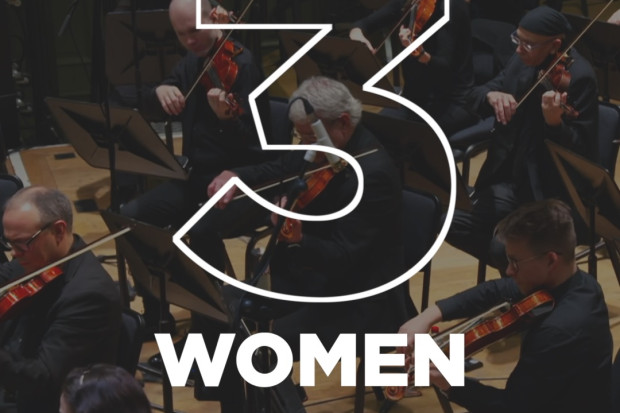
Ulster Orchestra Marks International Women's Day
Ulster Orchestra marks International Women’s Day with the release of three exclusive performances of music by Elizabeth Maconchy, Louise Farrenc, and Fanny Mendelssohn-Hensel
Though often underrepresented in the world of classical music, women composers Mendelssohn-Hensel, Maconchy, and Farrenc all have unique musical stories to tell. To mark International Women’s Day 2022, Ulster Orchestra presents performances from our season concerts last year of works by these three composers.
Fanny Mendelssohn-Hensel (1805-1847)
Fanny Mendelssohn-Hensel was forced by her position in upper-class 19th century German society to grow as a musician and composer largely in the shadow of her brother, Felix. Fanny however, was a highly skilled and very well accomplished pianist by the age of 13. Though her father was insistent that music would not be a suitable pursuit for his daughter in adult life, she defiantly continued to compose. Almost 500 works in various music forms are attributed to Fanny, including The Italien, which was famously originally released under brother Felix’s name. During a performance for Queen Victoria at Buckingham Palace, the monarch asked to hear her ‘favourite’ Felix Mendelssohn piece – which happened to be The Italien.
Fanny’s husband, Wilhelm Hensel, was supportive of her composing, and the couple hosted many concerts from their own personal wing of the Mendelssohn family home in Berlin. On the occasion of the 15th June 1834, the Berline Königstadt theatre and their conduct Julius Lecerf arrived to give a very special premier, of Fanny’s first (and only) purely orchestra composition (Overture in C Major), composed two years earlier. Finally publishing her own work under her own name at the age of 41 was a triumph tragically short lived for Fanny, who died shortly afterwards.
Elizabeth Maconchy’s (1907-1994)
Elizabeth Maconchy’s composing life began at the age of 6 at her parent’s piano. She studied under Vaughan Williams, who stated in her final report he had taught her everything he could and had no more to offer her that she did not already know. Although her earlier compositional works were heralded in Europe, World War II seemed to catalyse a change in style for her musical creation that was not as well received in these circles. However, Maconchy herself felt she had found her true musical voice. Clearly favouring chamber music composition, out of the over 200 works she wrote during her lifetime, Machonchy said of her thirteen string quartets composed between 1933 and 1984 were “my best and most deeply-felt works”.
A passionate socialist, according to academics, Maconchy favoured the quartet form as her idea of a musical debate between four balanced, individual, impassioned voices. Healthy debate was perhaps something Maconchy longed for in a world ravaged by war, a world where women still did not have a voice thought to be worth listening to. Maconchy certainly knew her musical voice, and held firm in her impassioned decision to raise that voice in a musical space still so dominated by her male counterparts. This struggle, she felt, was worth it, for she stated herself “I cannot imagine a life without being engaged in musical composition.”. Her correspondences with fellow woman composer, Grace Williams, point to a determination to develop a network of women composers helping each other overcome the challenges of this environment.
Louise Farrenc (1804-1875)
Louise Farrenc’s early musical life was spent studying piano with Johann Hummel and composition with Anton Reicha, and by her early twenties she was touring Europe as a pianist. However, while there was space for women in the 19th century musical performance world in Paris, musical composition was a very different story. Furthermore, Farrenc did not lean towards playing and composing in line with mainstream musical trends at the time of the virtuoso. Performing little-known late sonatas of Beethoven gave her a taste set apart from what was in vogue and often the taste of French women with musical ability at the time (opera, coloratura and cadenza) in instrumental ensemble composition (sonata and symphonic forms). This therefore informed her compositional repertoire, which was set largely apart from her contemporaries in mid-19th century Paris.
Pursuing a career offstage as a music teacher, composer of chamber music, and performer, editor and champion of largely unexplored harpsichord repertoire, Farrenc found herself in a unique position. As Paris conservatoire’s only woman professor of the 19th century, it was a battle she fought alone for nearly a decade to gain pay equal to her male counterparts – a powerful endeavour to take on, considering Paris Conservatoire had barred woman composition students until the 1870s (during the time she herself taught there).









